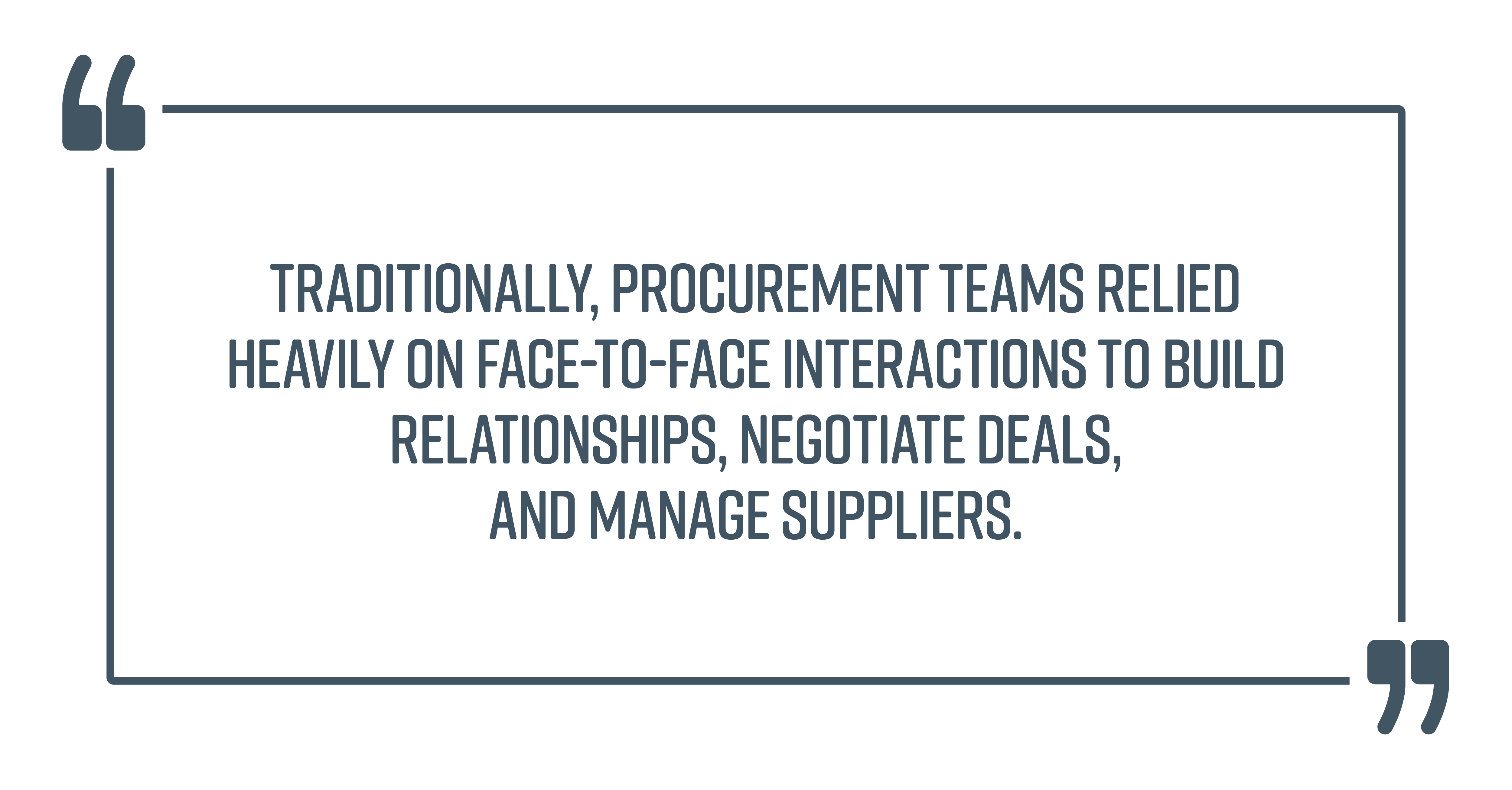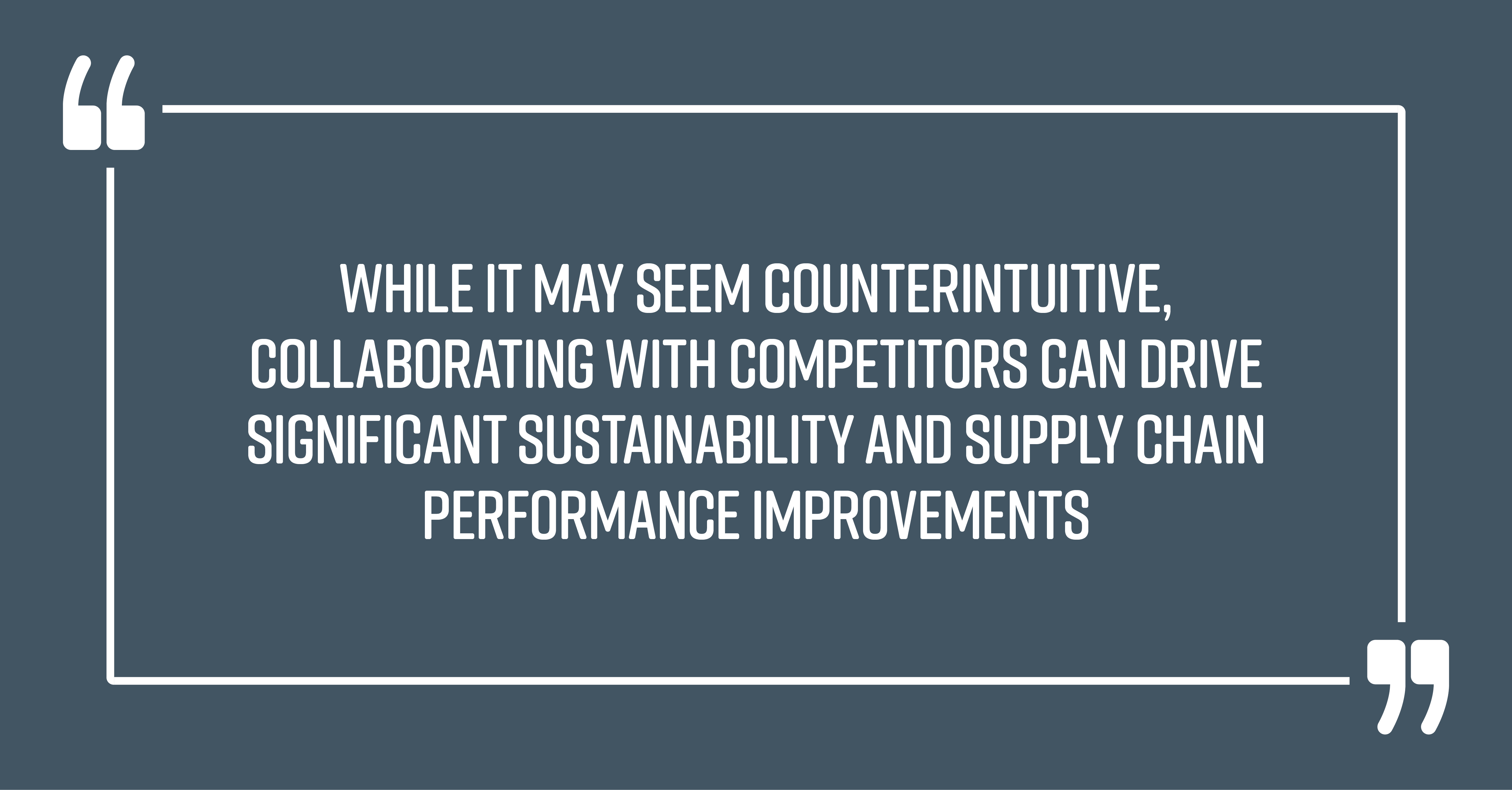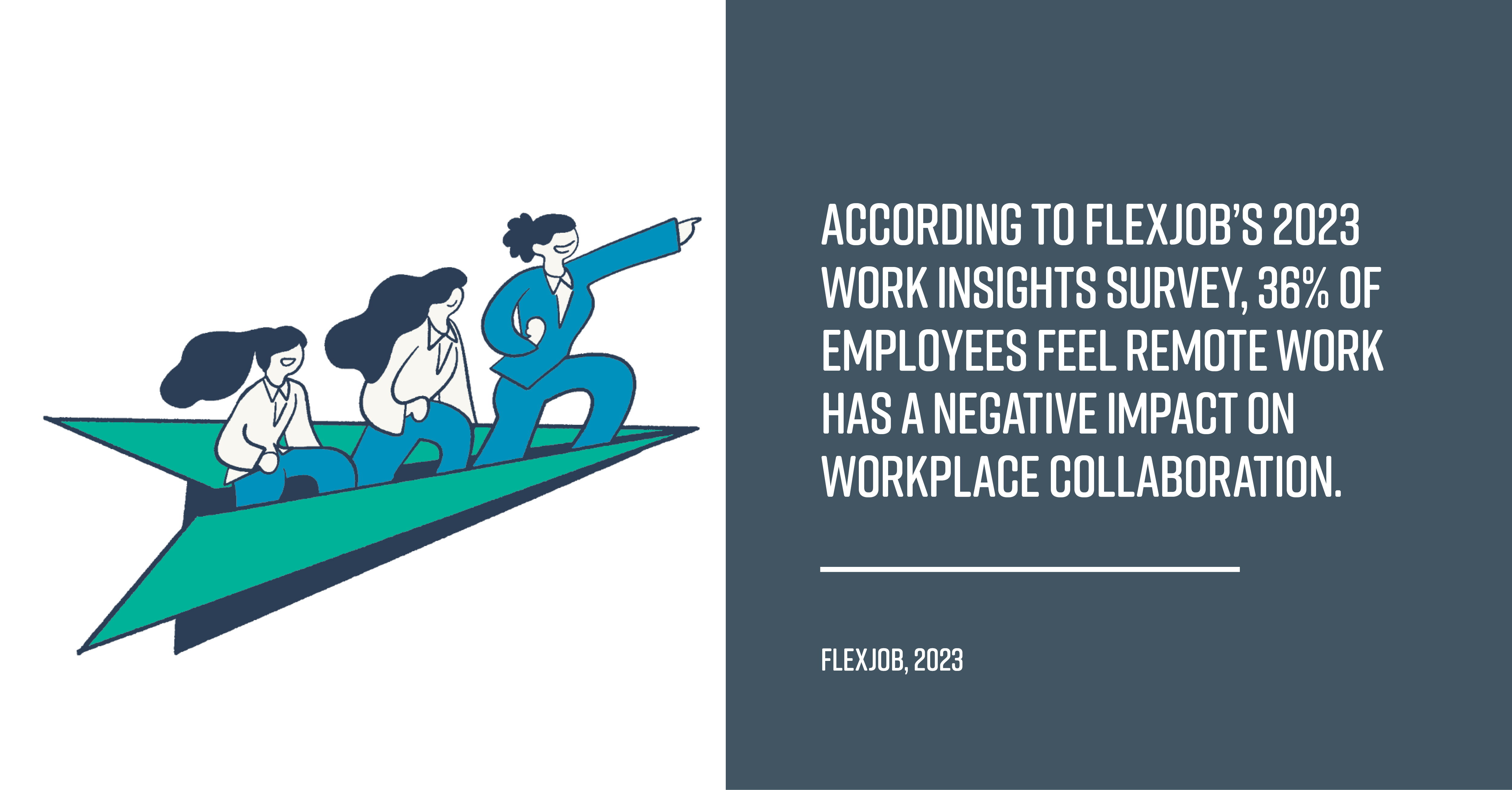Due to digital transformation, hybrid work models, and AI advancements, the procurement landscape has undergone significant transformations. These changes have reshaped how procurement professionals collaborate and execute their tasks.
In this new era, collaboration in procurement has become critical for achieving efficiency and innovation.
In our latest blog, we invited Kathleen Harmeston to share her thoughts on this changing field. She highlights the importance of collaboration in today’s hybrid work environment. Kathleen has over 30 years of experience in consulting and operating at the executive level in procurement.
The Shift from In-Person to Hybrid Work Models
Procurement has significantly transformed with the shift from in-person to hybrid work models. Traditionally, procurement teams relied heavily on face-to-face interactions to build relationships, negotiate deals, and manage suppliers. However, the pandemic’s onset forced organizations to adopt remote work, using digital tools and technologies to maintain essential functions.

This transition has brought both challenges and opportunities. Remote work has made procurement teams more agile and flexible. It allows for easy communication and collaboration among teams in different locations.
The absence of face-to-face meetings has made it difficult to build trust with our suppliers and stakeholders. This has affected our relationships with them.
While remote work can be effective for short periods, Kathleen believes a hybrid model is better suited for maintaining the quality of procurement processes. It enables procurement teams to find a balance, maximizing efficiency and teamwork. They can use in-person meetings for important activities and digital tools for everyday tasks.
The Rise of Collaboration During the Pandemic
The pandemic-driven shift to remote work created a surge in collaborative procurement practices as organizations had to adapt quickly to the new normal. They needed to find new ways to maintain productivity and keep supply chains strong. Collaborative procurement emerged as a powerful strategy to achieve these goals.
During the pandemic, procurement professionals leveraged digital platforms to collaborate with suppliers, stakeholders, and internal teams. This collaboration extended beyond traditional boundaries, with competitors coming together to address common challenges.
We saw many benefits of collaborative procurement emerge during the pandemic. Organizations experienced increased creativity, faster problem-solving, and enhanced resilience. Procurement teams achieved more than they could in isolation by pooling resources and sharing best practices. This period of intense collaboration demonstrated the potential of digital tools and technologies in driving procurement innovation.
Have We Seen a Decline in Collaborative Procurement Post-Pandemic?
As the world has emerged from the pandemic, people questioned whether the momentum of collaborative procurement has sustained. A McKinsey report states that some activities are more effective when done in person. These activities include negotiation, collaboration, brainstorming, team building, feedback, and decision-making. This indicates that while digital tools facilitate routine tasks, in-person interactions remain crucial for high-stakes activities.
Real-world examples highlight the challenges of maintaining the same level of collaboration post-pandemic. Some organizations have struggled to strike the right balance between remote and in-person work. For instance, the UK government has asked civil servants to spend 60% of their working hours in the office. This decision has faced opposition from numerous employees who favour remote work.
Organizations need to create flexible models to support the benefits of collaborative procurement in the hybrid work era, and these models should meet the needs of both the business and its employees. This involves creating environments that facilitate meaningful interactions, setting clear goals, and empowering teams to make decisions autonomously.
Storytelling: A Key to Effective Collaboration
In procurement, storytelling is vital in building trust and fostering effective collaboration. It allows procurement professionals convey complex ideas, share their experiences, and create a shared understanding among stakeholders. This becomes even more crucial in a hybrid work environment where face-to-face interactions are limited.
By sharing stories about the value of procurement activities, professionals can build trust and engage stakeholders. These stories humanize procurement processes, making them more relatable and easier to understand.
For example, sharing success stories about collaborative procurement initiatives can showcase the tangible benefits of working together. These stories highlight how collaboration has led to cost savings, improved quality, and business growth. When procurement professionals communicate these benefits effectively, they can win stakeholder support and buy-in, fostering a culture of collaboration.
Collaborative Procurement: Real-World Examples and Best Practices
Collaboration with Competitors
Working with competitors is one of the more unconventional, yet effective, approaches to collaborative procurement. While it may seem counterintuitive, collaborating with competitors can drive significant sustainability and supply chain performance improvements. For example, competitors often get supplies from the same sources. By working together, they can share the effort to promote sustainability and meet compliance standards.

Furthermore, collaborative efforts through industry bodies can be particularly successful. Competitors can collectively address common challenges by pooling resources and aligning goals, such as reducing environmental impact or improving labour practices, helping to reach sustainability goals.
Supplier Collaboration for Innovation
Another critical aspect of collaborative procurement is fostering innovation through supplier collaboration. By working closely with suppliers, organizations can discover new ideas and technologies which can lead to big improvements in the supply chain. This involves creating programs for teamwork, sharing contracts, and working together on projects to develop new products or processes.
Cross-Functional Teams and Governance
Effective collaboration in procurement also requires the right organizational structure and governance. Cross-functional teams, involving members from various departments, can provide diverse perspectives and expertise, leading to more innovative solutions. In order to reach their goals, it’s critical that these teams have strong leadership and coordination.
The Positive Purchasing 5P governance model provides a framework for managing strategic collaborative relationships. This model includes internal communications to secure support, manage communications, tracking benefits, and ongoing learning and development. With the right structure and processes, organizations can ensure their collaborative procurement initiatives succeed and deliver tangible benefits.
Overcoming Challenges in Collaborative Procurement
Despite the numerous benefits, collaborative procurement also presents several challenges. Ensuring 100% compliance with sustainability policies, managing ongoing auditing regimes, and detecting non-compliances can be difficult. Fostering innovation requires clearly articulating business requirements, capturing and filtering innovative ideas, and setting realistic objectives.
To overcome these challenges, organizations need to:
- Develop a system for capturing and implementing innovative ideas.
- Share business plans and establish trust with suppliers.
- Continuously review and focus on key areas of innovation.
- Set realistic and time-bound objectives for innovation.
By addressing these challenges proactively, procurement teams can sustain the benefits of collaborative procurement.
Summary
The hybrid work era has reshaped the procurement landscape, making collaboration more critical than ever. By leveraging digital tools and fostering a culture of collaboration, procurement professionals can achieve significant benefits, including cost savings, improved quality, and enhanced sustainability. Storytelling, competitor collaboration, supplier innovation, and effective governance are key strategies for success in this new era.
You can hear more from Kathleen Harmeston by checking out her website here.
Written by Jonathan O’Brien, leading procurement expert and CEO of Positive Purchasing Ltd. Jonathan works with global blue-chip organizations to help transform their procurement capability.


